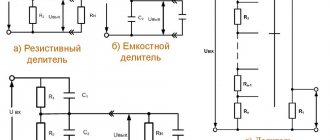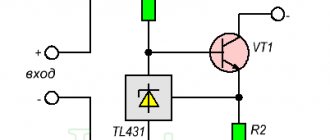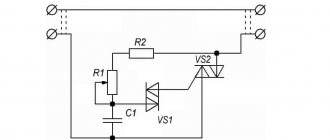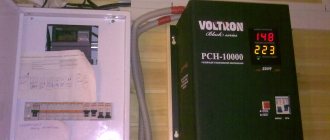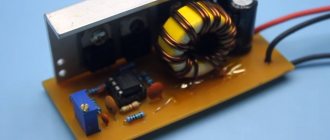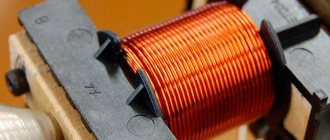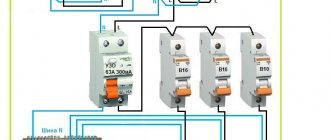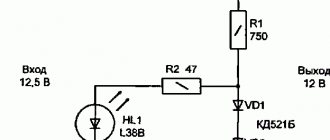9e3377222f69609b
Low voltage in the network - causes, ways to solve them
Do-it-yourself construction, repair and landscaping
Menu
Building a house Electricity
220 volts - every schoolchild knows the normal voltage in the network. However, not all houses apply this standard. Power surges are typical for private, country houses. This destroys household appliances and can lead to a fire. Why does low voltage occur in the network, what to do about this problem? How to return the indicators to normal?
From wiring wear to substation failures: reasons for low performance
Flashing light bulbs, a slowly boiling electric kettle, and a bad TV are not talking - they are screaming about power failures. Such glitches are no joke. Therefore, you need to immediately find out why the voltage drops. This can be done experimentally, gradually eliminating possible failure options.
Flashing lights are the first sign of a voltage drop in the network
- Deterioration of electrical wiring. This often happens in old buildings when the house was built decades ago. Everything has an expiration date. Electrical cables are no exception.
- A crushing blow to the load when several high-power electrical appliances are connected to one machine at once.
- Problems with the cross-section of the input cable supplying the building with electricity.
- Incorrect connection or operation of the circuit breaker.
- Low voltage in the network is a consequence of a malfunction of the transformer substation.
- Incorrect connection of power lines to the house.
- Incorrectly selected, too small section of the main line.
- Uneven phase load, when a large number of electrical appliances are connected to one branch, while the other is essentially idle.
Other ways to increase voltage
In order to increase low voltage, there are many different methods that are used by many residents of apartments and country houses.
- Application of autotransformers. Their device makes it possible to increase the voltage by 50 volts. They are most often used in low-voltage electrical networks, in the countryside, where voltage drops are common and are considered a common occurrence. Using an autotransformer you can also reduce the voltage. When choosing them, you should take into account the power, otherwise they will get very hot.
- Low voltage can be normalized by using a multiplier, which is a special device made up of capacitors and diodes. Such multipliers are used to power picture tubes, increasing the voltage to 27 thousand volts.
- Using electromotive force. If you can adjust the EMF in an energy source with a special regulator, then you can increase the value of the EMF of this source. The voltage will increase by as much as the EMF will increase.
- Low voltage can be increased by changing the resistance. The dependence of voltage on resistance is as follows: by how much the resistance decreases, by how much the voltage increases.
- If you cannot increase the voltage using one of these methods, you can use them together. For example, to increase the voltage in a circuit by 12 times, you need to double the source emf, reduce the length of the wires by half, and increase their cross-sectional area by three times.
Source
Experienced way: eliminating options, stopping the fall
If there is not enough voltage in the network, then the first thing they do is measure the indicators. These numbers need to be compared with those of your neighbors.
The same indicators indicate a common problem. Accordingly, you should contact the service provider. Different - about the headaches exclusively of the owner of a particular household.
Measuring voltage readings at the entrance to the house is especially important
If possible, you need to inspect the wires at the entrance to the house. They can heat up, losing units of electricity. The reason lies in poor contact. It should be dealt with by a professional.
Surge protection
In urban conditions, the voltage in the network, as a rule, remains constant, but protecting the apartment from voltage surges becomes important. Here it’s time to remember the wonders of electronics, since “iron-wire” electrical engineering does not know effective, simple and cheap ways to smooth them out.
Ask around at electrical and radio stores for a surge protector; they are also called “protective barriers”. You can see what this looks like in the illustration. Modern devices of this type are relatively inexpensive, compact, easy to connect and do not require maintenance during operation.
A simple protective barrier for your home electrical network
But don’t think about the autotransformer at the dacha - the protective barrier only eliminates voltage surges; It cannot keep the voltage in the socket all the time at a stably low voltage. Supercapacitors are used as energy storage devices in such devices, and although they are “super”, they are still not electric generators.
Mains voltage stabilizer
Having established and eliminated the cause, you need to decide how to increase the voltage in the network to 220 Volts. The most common method is a household stabilizer, which regulates the current power, increasing and decreasing the indicators.
Household voltage stabilizer regulates current power
The device becomes a link between the energy supplier and the energy consumer. Accordingly, it is connected in the middle. The current enters the stabilizer. If the voltage in the network is less than 220 Volts, then the device raises it. The indicators change to the required ones, household appliances and other electrical appliances work without failures.
When choosing a stabilizer, you need to take care of the power reserve. It should be about 20%.
Such a device must be permanently connected. Although some experts consider the installation of stabilizers not the most optimal measure. A large number of these devices can lead to the fall of a network of power lines. In this case, you will have to restore the entire system.
Video: how to choose the right voltage stabilizer, what to look for?
When choosing a stabilizer, you need to estimate the total load of electrical appliances. You don't have to be a mathematician. It is enough to study the technical data sheets of the main devices, where the power consumption is specified. It is important to avoid overloading the stabilizer by connecting more and more devices.
It will not start working until the load returns to normal. This means that unnecessary devices will have to be turned off. Accordingly, with a non-working stabilizer, the question of how to increase the voltage in the network will not be resolved.
The choice of stabilizer depends on the total power consumption of electrical appliances
When choosing a stabilizer, you need to take care of the power reserve. It should be about 20%. Then it will be possible to connect the new sconce to this network and install the microwave. It is better to calculate the stabilizer power in advance. You can use an online calculator, which is available on all sites that sell this equipment. You can carry out calculations yourself by adding up the rated power consumption of various household appliances and tools that will be connected at the same time.
At the same time, many equipment, when they start working, consume power that significantly exceeds the rated power. Usually the indicators increase by 4-7 times. In no case should this factor be forgotten when making calculations. Starting power indicators are also recorded in the technical passport of each item. That is why it is important to save all documents for household appliances and various electrical appliances. When making calculations, this factor must also be taken into account.
Voltage stabilizer from the Russian company “Shtil”
The Russian manufacturer of protective equipment Shtil knows how to increase voltage. The main advantage of devices for private and country houses is their reasonable cost.
For example, the price of the R 110 model is about 3 thousand rubles. In this case, the operating range ranges from 165-265 Volts. For comparison, another product from this company - R 16000 - costs about 70 thousand rubles. It provides reliable protection for the most sensitive equipment, justifying the owner’s investment.
The products of the Energia company are in demand on the Russian market
Stabilizers similar in price and parameters are produced by another Russian company. After all, local companies know first-hand what to do with low voltage in the network. And spare parts for such devices are easier to find on the domestic market.
Voltage booster. We break down the air conditioning system in carriages
Price: $1.18 In one of my reviews, I mentioned that I went to Perm for part-time work.
I went by train. Reserved seat. Anyone who has been there knows how unbearably hot it is there in the summer. But more on that later. Hello, friends! Today will be one of my most unusual reviews, because... I will talk about a board with which you can increase the voltage, but I will also demonstrate several interesting life hacks.
The board itself looks like this.
Its purpose, as I already said, is to increase tension. By the way, the output voltage is regulated using this trimming resistor.
An interesting surprise also awaited me on the other side. This fragment is the so-called metallization, it is necessary for cooling. Of course, this does not give a super effect, but for small loads it is enough.
If this “built-in” cooling is not enough, you can apply thermal paste to the same area and attach it to an aluminum radiator from an old computer cooler, which is usually installed to cool the processor. Fortunately, I have both, however, I don’t currently have taps to cut threads on the radiator and secure the board with screws. That is why I tested the board “as is”, i.e. what loads can be given to her without additional loads? cooling. But nothing, the taps are on their way, soon and with extras. Let's test it with cooling.
Well, let's move on to torture. To begin, supply power from a 1.2-volt charged nickel-cadmium AA battery.
Two photos at once - at a minimum and at a maximum.
Obviously, this voltage booster with such an “input” is practically useless - it even has the opposite effect.
Now let's change the power source to a charged 3.7V lithium-ion battery, i.e. at the input we will have 4.15-4.2V.
There are also two photos - at the minimum adjustment and at the maximum.
So, at the minimum adjustment we got almost 5.7V, and at the maximum we got more than 40V. This is even more than the Chinese promised!
Well, since there’s such a fuss, let’s at the same time see what this board is capable of.
First of all, let's test it on a 12-volt computer cooler. There is still 1 lithium-ion battery at the input, it is still charged. For the test, I set the board to 12V.
Now let's connect the cooler and see the voltage drop.
Please note - there is practically no drawdown. This is very good.
By the way, here is your first life hack. Remember what I said before “Hello, friends!”? So, on the train I was more or less helped out by the fact that I thought of connecting this cooler to the 5.2V power bank that was available at that time. Yes, it worked, but weakly. And with the help of this board, I can now raise 5.2V to 12V and the cooler on the train will blow air on me much more efficiently. Yes, I don’t argue, you can order a ready-made USB fan from Ali, but it will also be from 5V, and not from 12, i.e. It is unlikely that it will be more effective than the method I proposed.
Now let's measure the current strength “before” and “after” and calculate how effective it all is.
Our 12V cooler consumes 92mA, with the stated 100. And how much current is “leaving” from the batteries?
380mA - this is after the current “stabilized”, the starting current was more than 400mA, as evidenced by the beeping of the multimeter (due to exceeding the permissible range of 400mA).
Now we count (we’ll count the voltage on the battery as 4.1V, since there was a slight drop under load): 4.1V*0.38V=1.558V*A 12V*0.09A=1.08V*A
Even by eye you can see that the volt*amperes differ by almost 1.5 times.
1.08 / 1.558 * 100% = 69.3% efficiency. Those. Our losses amounted to almost 30%? which is quite a lot.
It was also at this stage that I noticed that the current consumption “at idle” (i.e. without load) is 20mA, which almost corresponds to the declared one (stated 18).
Now let's give it a more serious load. To do this, I bought a 12V 20W halogen lamp from the store. And even here my knipex helped me out, because... I didn't have a socket for this lamp. Compressed with NSHVI-shki.
There is still only one battery. Let's launch...
The light bulb barely shines, and the battery produces a current of almost 4 amperes, which is very close to the maximum current allowed for this board. Within a few seconds of operation, the board became so hot that it gave off a rather unpleasant smell, and the board became impossible to pick up. Therefore, at peak loads it will not be possible to do without a cooling radiator.
Obviously, to obtain an effective glow and continue the experiment, you should add another battery, because one is not enough. If we add a battery in parallel, we will 100% exceed the permissible current. Therefore, we connect the batteries in series to increase the voltage instead of current. Let's do so.
I reconfigured the board again to 12V (since the input voltage increased, it means it increased at the output). Let's launch...
There is a slight voltage drop, but not critical. The light bulb now shines very brightly. The board also heats up a lot, but to a slightly lesser extent, because... The current from the batteries is still close to peak.
Well, since we powered the board from 2 batteries connected in series, let's see how the output voltage changes.
First, let's look at the input voltage.
Well, now the minimum and maximum.
50V is not even bad. I did not test the board at higher loads to prevent it from burning out.
Wisdom: Not everything that costs money costs money.
Announcement
Friends, this time I am announcing a review of Camelion 1000mAh AA nickel-cadmium batteries, which I use as power sources for my digital camera.
Well, since we’ve touched on the topic of AA batteries, let’s announce these chickens at the same time.
In both cases, as you may already guess, the review will be more than objective.
Transformer
Another option for increasing the voltage in the network to 220 Volts is to install a special transformer at the input of the house. The device must be set up properly. To do this, you need to measure the current intensity by calculating the transformation ratio. He will have to increase the flow, for example, from 180 Volts to the optimal level. In this case, the calculation is simple. You need to divide the optimal indicator (220 Volts) by the original mains voltage (180 Volts). It turns out that in this case it is necessary to look for a transformer with a transformation ratio of 1.22 (220/180).
Video: types and principles of operation of transformers
It should be remembered that using such a device can also result in a problem. Low voltage and surges can be caused by overload at the service substation. When its operation is established, the transformer will not respond as normal. On the contrary, it will also correct normal indicators. They will automatically be increased by the transformation ratio that is configured on the device. Let's say that now 220 Volts are supplied to the house. It is automatically multiplied by a transformation factor of 1.22. And in fact it turns out 270 Volts (220 * 1.22). This will again lead to the failure of electrical appliances.
Transformers from LIDER will help normalize voltage
Transformer equipment is produced by the Russian company LIDER. This manufacturer has a lot of models of autotransformers. Their cost ranges from 17 to 35 thousand rubles. So, you can choose the budget model Lider ATR-2000 (150-190). The active load power is 1600 W, the total power is 2000 VA. The operating input voltage range is 150-190 Volts. The output is 174-220 Volts. The weight of the device is 12 kg. Can be placed on the wall or floor of the room.
How to deal with low voltage in the network
The first thing that comes to mind when voltage is low is buying a voltage stabilizer. Today there is a wide variety of automatic stabilizers that pull the desired 220 volts from 140 volts and even lower.
Stabilizers are relay and servo, triac and thyristor. The cheapest, but also the most unreliable, are relay stabilizers, in which relays are responsible for switching the transformer windings.
These same relays have contacts and operate a certain number of times, so it’s hard to call them reliable. Triac voltage stabilizers turn out to be more durable in this regard, but the price tag for them starts from 30 thousand rubles and above.
In addition, buying a voltage stabilizer is not always able to solve the problem. If the voltage is below 140 volts, then the stabilizer will always go into protection or not produce the required 220 volts at the output. In addition, with such a reduced voltage, the service life of the stabilizer is greatly reduced.
Where should it be used?
Depending on the devices we have and their sensitivity to supply voltage, the need to stabilize the voltage may arise at different times. It can be tentatively assumed that a voltage that deviates by more than 10%, that is, in the case of a voltage of 220 V, a voltage outside the range of 207-253 V, is a voltage that can cause problems with devices.
- Often the manufacturers of these devices specify the permissible input voltage, and sometimes suggest the use of voltage stabilizers. This is the case with CNC machines.
- The idea of a voltage stabilizer is to automatically stabilize the voltage according to the set rated voltage.
- The control checks the output voltage in accordance with the selected technology in order to approach the nominal value with a certain accuracy and maintaining hysteresis.
Accuracy and hysteresis at the level of 1-2% guarantee that the stabilization system will not be rebuilt. This is if the rated voltage is 220 V and the output voltage is 222 V, then the control system will not change it. It should be added that the three-phase solution is actually 3 single-phase stabilizers. It’s just that each phase is stabilized separately.
